The most suitable type of streetlight for highways is LED streetlights because of their energy efficiency, long lifespan, low maintenance, and bright, clear illumination. Additionally, solar-powered streetlights are ideal for sustainable highway projects, especially in regions with ample sunlight, complementing LED installations to reduce energy costs.Learn more about LED lighting technology from the U.S. Department of Energy for insights into its benefits.
Introduction
Highway street lighting plays a crucial role in ensuring safety, visibility, and operational efficiency. The right type of streetlight can significantly reduce accidents and enhance driving comfort. This article discusses various types of streetlights suitable for highways, factors to consider, successful case studies, and future trends in highway lighting.
Importance of Highway Lighting
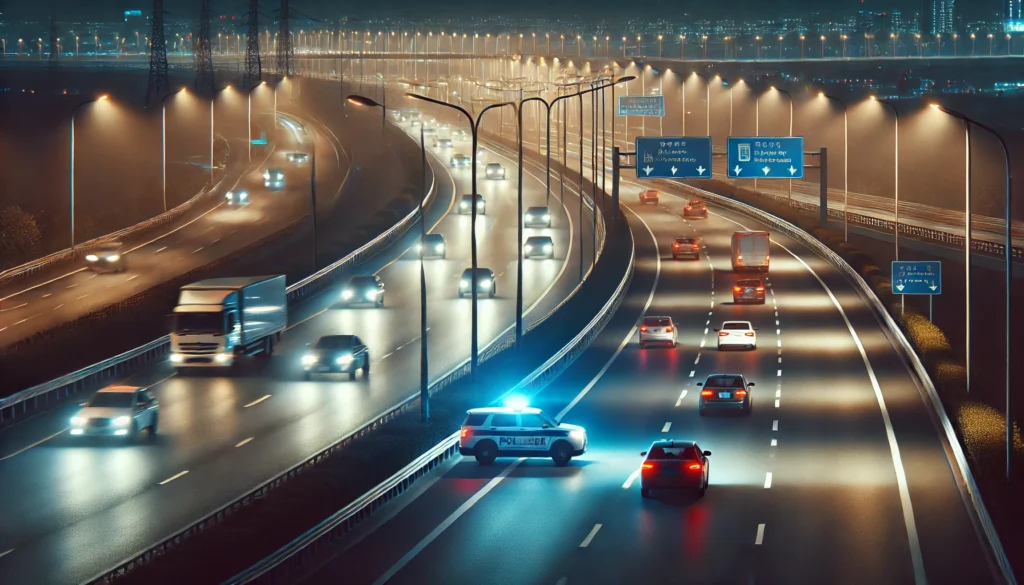
1. Improves Road Safety
Highway lighting helps prevent accidents by enhancing visibility at night and in low-light conditions, ensuring drivers can quickly detect obstacles, vehicles, and signage.Read about roadway lighting’s impact on safety from the National Academies of Sciences, Engineering, and Medicine.
2. Reduces Driver Fatigue
Well-lit highways reduce driver fatigue by making it easier to navigate the road, especially over long distances or in poor weather conditions.
3. Enhances Traffic Flow
Proper lighting contributes to smoother traffic flow by minimizing sudden stops or confusion caused by poor visibility, reducing the likelihood of congestion.
4. Supports Law Enforcement and Emergency Response
Good lighting facilitates law enforcement by improving visibility for patrol vehicles. It also helps emergency responders reach accident scenes efficiently.
5. Promotes Community and Environmental Safety
In addition to road safety, highway lighting can reduce crime along highways, rest areas, and service stops, contributing to overall public safety.Learn more about the role of public lighting in crime prevention from the Center for Problem-Oriented Policing.
Types of Streetlights
1. LED Streetlights
- Advantages:
- Energy-efficient and reduces operating costs.
- Long lifespan and low maintenance.
- Provides bright, clear light, ensuring excellent visibility.
- Disadvantages:
- Higher initial cost.
- Requires proper shielding to avoid light pollution.
LED streetlights are the preferred solution for highways because of their reliability, cost savings, and superior illumination. For detailed guidance on selecting LED products, refer to the Illuminating Engineering Society (IES).

2. High-Pressure Sodium (HPS) Lights
- Advantages:
- Good performance in foggy conditions.
- Lower initial investment compared to LEDs.
- Disadvantages:
- Shorter lifespan than LEDs.
- Yellowish light that may affect visibility in certain conditions.

3. Metal Halide Lights
- Advantages:
- High brightness and excellent color rendering.
- Suitable for locations requiring intense illumination.
- Disadvantages:
- High energy consumption.
- Shorter lifespan, increasing maintenance costs.
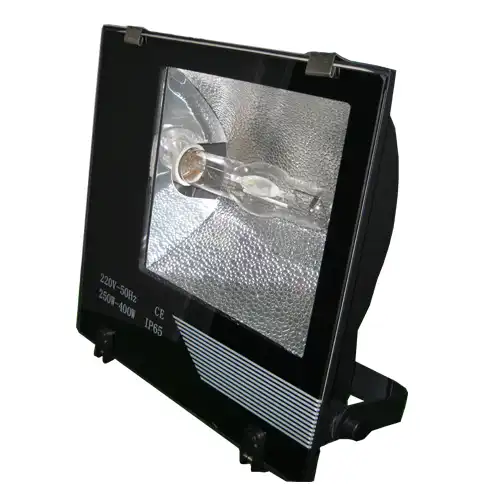
4. Solar-Powered Streetlights
- Advantages:
- Renewable energy source with low operating costs.
- Eco-friendly and ideal for sustainability-focused projects.
- Disadvantages:
- Dependent on sunlight for performance.
- Requires a higher initial investment and adequate space for solar panels.
- Discover more about solar street lighting benefits from Solar Energy International.
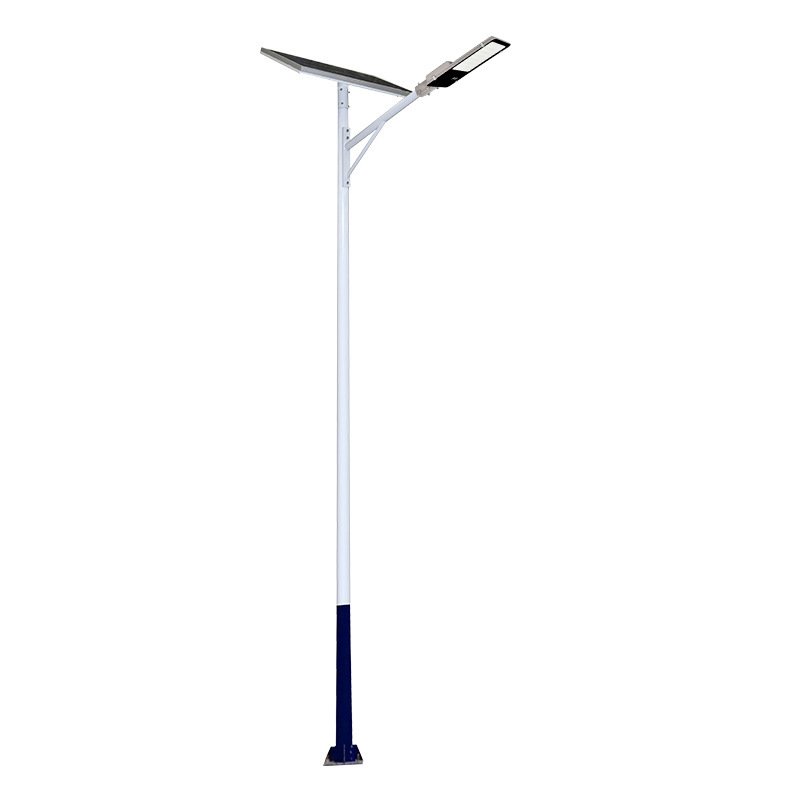
Factors to Consider When Choosing Streetlights for Highways

1. Illumination Levels
Recommended lux levels for highway lighting range from 10 to 30 lux to ensure safe driving conditions.
2. Energy Efficiency
Choosing energy-efficient lights like LEDs saves energy costs over time and reduces carbon emissions. Visit the U.S. Environmental Protection Agency‘s ENERGY STAR program to explore energy-efficient lighting options.
3. Maintenance Requirements
Streetlights with long lifespans, such as LEDs, minimize the need for frequent maintenance, saving operational costs.
4. Durability and Weather Resistance
Highway streetlights must withstand harsh weather, including extreme temperatures and rain, ensuring long-term reliability.
Case Studies

1. Thailand Airport Highway Project (LED Installation)
LEDMVS supplied LED streetlights for a highway connecting a key international airport in Thailand.
- Result: The LED lights provided consistent brightness and reduced maintenance needs, enhancing safety for travelers and airport staff.
- Lesson Learned: Efficient installation and well-planned maintenance schedules ensured zero disruptions to traffic.

2. Singapore Expressway (LED Conversion)
Singapore converted all expressway streetlights to LEDs to reduce energy consumption.
- Result: A 40% reduction in energy costs and improved visibility for drivers.
- Lesson Learned: Smart sensors helped optimize energy use by adjusting brightness based on traffic conditions.
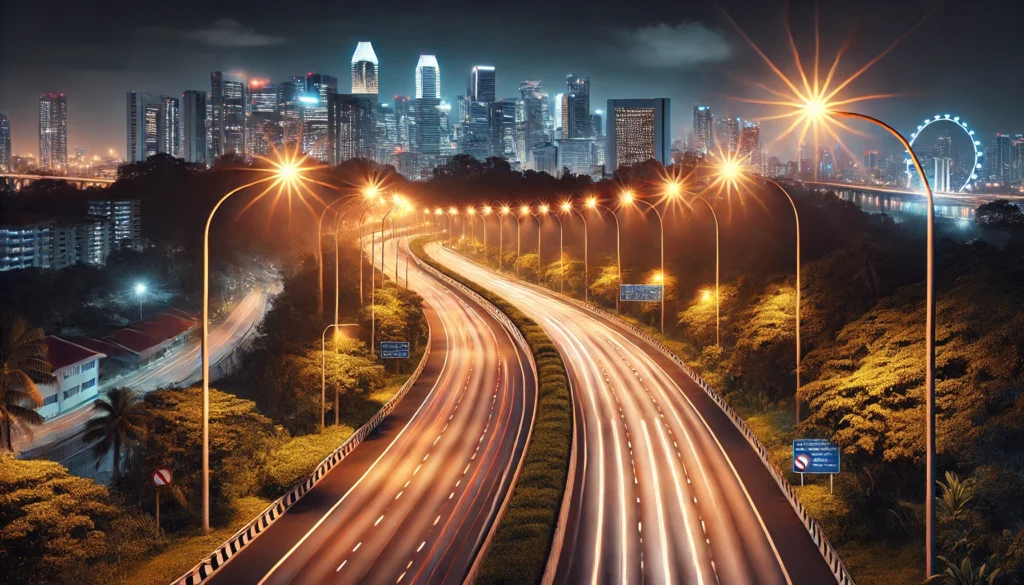
3. Dubai Solar Highway Lighting
Dubai implemented solar-powered streetlights along key highways to support sustainability goals.Learn more about Dubai’s sustainability initiatives.
- Result: Energy independence and lower operational costs.
- Lesson Learned: Batteries must be carefully maintained to ensure performance during cloudy days.
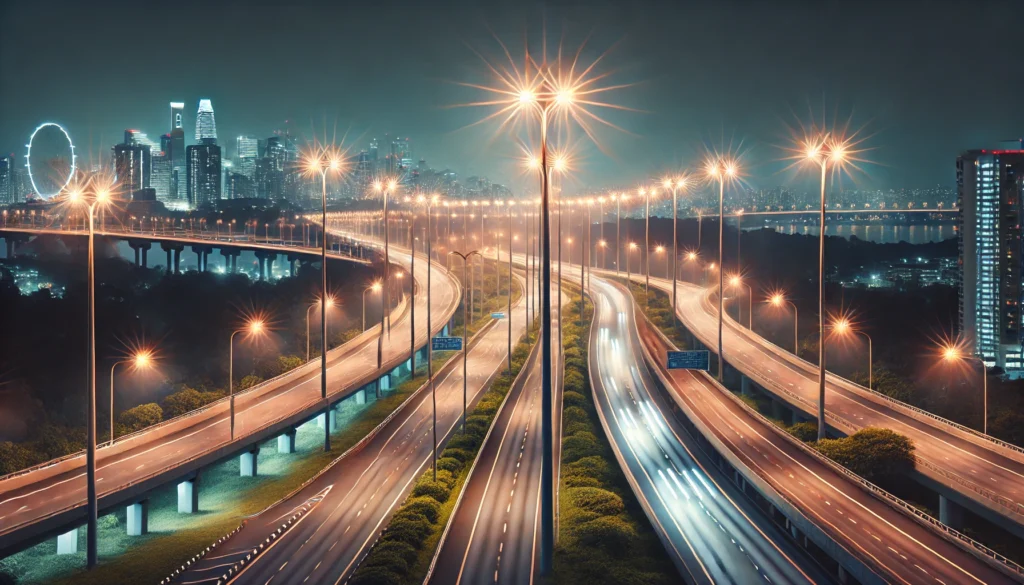
4. California Highway Smart Lighting Project
California introduced smart LED lighting with IoT integration on its highways.
- Result: Brightness automatically adjusted based on real-time traffic conditions, optimizing energy use.
- Lesson Learned: Smart lighting technology can further reduce energy consumption by 20-30% compared to traditional LED systems.
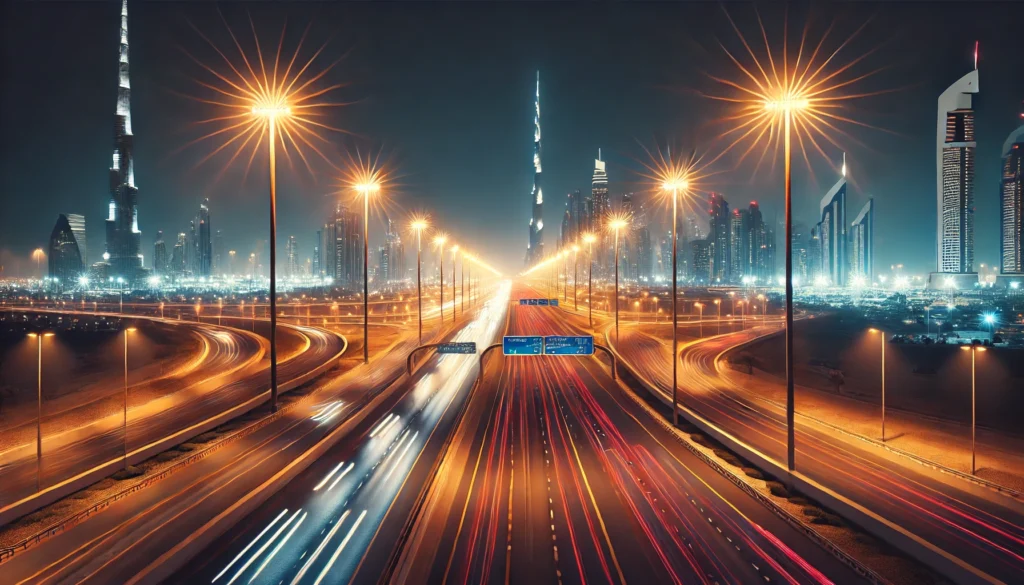
5. Malaysia’s North-South Expressway (LED and Solar Hybrid)
The North-South Expressway in Malaysia adopted a hybrid lighting system with LEDs and solar-powered streetlights.
- Result: Improved energy efficiency and lower carbon emissions.
- Lesson Learned: Combining LEDs with solar power ensures reliable performance even in power outages..
Future Trends in Highway Lighting
1. Smart Lighting Solutions
Smart streetlights equipped with IoT sensors adjust brightness in real time, enhancing energy efficiency. Explore more on smart lighting from the Smart Lighting Alliance.
2. Sustainability Initiatives
Governments are increasingly focusing on eco-friendly materials and renewable energy sources for highway projects. For more about sustainable urban infrastructure, see the World Resources Institute. These external links provide valuable resources to readers while enhancing your article’s credibility and SEO performance by connecting it with authoritative sources on relevant topics like LED technology, solar streetlights, smart lighting systems, and sustainability in infrastructure projects.
Conclusion
Summary of Key Points
The most suitable streetlights for highways are LED streetlights, thanks to their energy efficiency, long lifespan, and excellent illumination. In locations focused on sustainability, solar-powered streetlights provide a viable complement to LED systems.
Final Recommendations
Highway authorities should prioritize LED lighting systems for their superior performance and energy savings. Smart lighting technologies and solar-powered solutions should also be considered to enhance efficiency and sustainability.

